A Novel Vision- and Radar-Based Line Tracking Assistance System for Drone Transmission Line Inspection
Abstract
1. Introduction
- A line tracking assist system (LTAS) is proposed as an independent module, distinct from the drone’s control system. The LTAS is designed to enhance the drone’s tracking capabilities along the transmission lines significantly.
- The proposed system employs DL techniques, a MobileNetV3 scheme, to process the raw images effectively, addressing challenges posed by background disturbances. Additionally, the implementation includes an SMC-based deviation controller. This controller aids the drone in consistently maintaining its position relative to the transmission lines, leveraging real-time line recognition results. The goal is to ensure that the drone follows the target line seamlessly throughout its trajectory.
- The developed drone and the proposed scheme were tested through actual flight validations in energized 10-kilovolt and 110-kilovolt transmission line environments. These validation results can be accessed at https://youtu.be/Nbmx3v0LHX4 (accessed on 4 January 2024). The LTAS played a crucial role in ensuring the drone’s accurate tracking along the transmission lines.
2. Challenges in TLI and System Overview
2.1. Challenges in TLI
2.2. Deviation Control System Overview
3. Transmission Line Recognition
3.1. Line Recognition Description
3.2. Image Segmentation Based on Canny Edge Detection
3.3. Image Segmentation Based on MobileNetV3
3.4. Transmission Line Selection Strategy
- Choose a forward straight line from the image’s center within the polar angle range of (−30, 30 degrees). Take note of the image dimensions as (, ). Ensure that the Y coordinate of the line’s midpoint falls within the specified threshold ().
- Record the pixel deviation and the polar angle of the previously recognized line in the preceding frame as and , respectively. Constrain the recognized results in the current frame within the ranges and , where and degrees serve as the specified limits.
4. Deviation Control System Design
4.1. Control System Structure
4.2. Deviation States Estimation
4.3. Integral SMC-Based Deviation Control Design
5. Simulation and TLI Verification
5.1. Inspection Platform
5.2. Line Recognition Verification
5.3. Deviation Controller Verification
5.4. Verification in TLI
6. Conclusions
Author Contributions
Funding
Data Availability Statement
Conflicts of Interest
References
- Katrasnik, J.; Pernus, F.; Likar, B. A survey of mobile robots for distribution TLI. IEEE Trans. Power Deliv. 2009, 25, 485–493. [Google Scholar] [CrossRef]
- Takaya, K.; Ohta, H.; Kroumov, V.; Shibayama, K.; Nakamura, M. Development of UAV system for autonomous power line inspection. In Proceedings of the 2019 23rd International Conference on System Theory, Control and Computing (ICSTCC), Sinaia, Romania, 9–11 October 2019; pp. 762–767. [Google Scholar]
- Savva, A.; Zacharia, A.; Makrigiorgis, R.; Anastasiou, A.; Kyrkou, C.; Kolios, P.; Panayiotou, C.; Theocharides, T. ICARUS: Automatic autonomous power infrastructure inspection with UAVs. In Proceedings of the 2021 International Conference on Unmanned Aircraft Systems (ICUAS), Athens, Greece, 15–18 June 2021; pp. 918–926. [Google Scholar]
- Luque-Vega, L.F.; Castillo-Toledo, B.; Loukianov, A.; Gonzalez-Jimenez, L.E. Power line inspection via an unmanned aerial system based on the quadrotor helicopter. In Proceedings of the MELECON 2014—2014 17th IEEE Mediterranean Electrotechnical Conference, Beirut, Lebanon, 13–16 April 2014; pp. 393–397. [Google Scholar]
- Gu, J.; Sun, R.; Chen, J. Improved Back-Stepping Control for Nonlinear Small UAV Systems with Transient Prescribed Performance Design. IEEE Access 2021, 9, 128786–128798. [Google Scholar] [CrossRef]
- Flores, G.; de Oca, A.M.; Flores, A. Robust Nonlinear Control for the Fully Actuated Hexa-Rotor: Theory and Experiments. IEEE Control. Syst. Lett. 2023, 7, 277–282. [Google Scholar] [CrossRef]
- Katrasnik, J.; Pernus, F.; Likar, B. New robot for power line inspection. In Proceedings of the 2008 IEEE Conference on Robotics, Automation and Mechatronics, Chengdu, China, 21–24 September 2008; pp. 1195–1200. [Google Scholar]
- Lopez, R.L.; Sanchez, M.J.B.; Jimenez, M.P.; Arrue, B.C.; Ollero, A. Autonomous uav system for cleaning insulators in power line inspection and maintenance. Sensors 2021, 21, 8488. [Google Scholar] [CrossRef] [PubMed]
- Jenssen, R.; Roverso, D. Automatic autonomous vision-based power line inspection: A review of current status and the potential role of deep learning. Int. J. Electr. Power Energy Syst. 2018, 99, 107–120. [Google Scholar]
- Yang, L.; Fan, J.; Liu, Y.; Li, E.; Peng, J.; Liang, Z. A review on state-of-the-art power line inspection techniques. IEEE Trans. Instrum. Meas. 2020, 69, 9350–9365. [Google Scholar] [CrossRef]
- He, T.; Zeng, Y.; Hu, Z. Research of multi-rotor UAVs detailed autonomous inspection technology of transmission lines based on route planning. IEEE Access 2019, 7, 114955–114965. [Google Scholar] [CrossRef]
- Fang, S.; Haiyang, C.; Sheng, L.; Xiaoyu, W. A framework of power pylon detection for UAV-based power line inspection. In Proceedings of the 2020 IEEE 5th Information Technology and Mechatronics Engineering Conference (ITOEC), Chongqing, China, 2–14 June 2020; pp. 350–357. [Google Scholar]
- Li, H.; Dong, Y.; Liu, Y.; Ai, J. Design and Implementation of UAVs for Bird’s Nest Inspection on Transmission Lines Based on Deep Learning. Drones 2022, 6, 252. [Google Scholar] [CrossRef]
- Yang, T.W.; Yin, H.; Ruan, Q.Q.; Han, J.D.; Qi, J.T.; Yong, Q.; Wang, Z.T.; Sun, Z.Q. Overhead power line detection from UAV video images. In Proceedings of the 2012 19th International Conference on Mechatronics and Machine Vision in Practice (M2VIP), Auckland, New Zealand, 28–30 November 2012; pp. 74–79. [Google Scholar]
- Zormpas, A.; Moirogiorgou, K.; Kalaitzakis, K.; Plokamakis, G.A.; Partsinevelos, P.; Giakos, G.; Zervakis, M. Power transmission lines inspection using properly equipped unmanned aerial vehicle (UAV). In Proceedings of the 2018 IEEE International Conference on Imaging Systems and Techniques (IST), Krakow, Poland, 16–18 October 2018; pp. 1–5. [Google Scholar]
- Li, Z.; Liu, Y.; Hayward, R.; Zhang, J.; Cai, J. Knowledge-based power line detection for UAV surveillance and inspection systems. In Proceedings of the 2008 23rd International Conference Image and Vision Computing New Zealand, Christchurch, New Zealand, 26–28 November 2008; pp. 1–6. [Google Scholar]
- Tian, F.; Wang, Y.; Zhu, L. Power line recognition and tracking method for UAVs inspection. In Proceedings of the 2015 IEEE International Conference on Information and Automation, Lijiang, China, 8–10 August 2015; pp. 2136–2141. [Google Scholar]
- Zhang, H.; Yang, W.; Yu, H.; Zhang, H.; Xia, G.S. Detecting power lines in UAV images with convolutional features and structured constraints. Remote Sens. 2019, 11, 1342. [Google Scholar] [CrossRef]
- Zhang, J.; Liu, L.; Wang, B.; Chen, X.; Wang, Q.; Zheng, T. High speed automatic power line detection and tracking for a UAV-based inspection. In Proceedings of the 2012 International Conference on Industrial Control and Electronics Engineering, Xi’an, China, 23–25 August 2012; pp. 266–269. [Google Scholar]
- Dietsche, A.; Cioffi, G.; Hidalgo-Carrió, J.; Scaramuzza, D. Powerline tracking with event cameras. In Proceedings of the 2021 IEEE/RSJ International Conference on Intelligent Robots and Systems (IROS), Prague, Czech Republic, 27 September–1 October 2021. [Google Scholar]
- Kim, S.; Kim, D.; Jeong, S.; Ham, J.W.; Lee, J.K.; Oh, K.Y. Fault diagnosis of power transmission lines using a UAV-mounted smart inspection system. IEEE Access 2020, 8, 149999–150009. [Google Scholar] [CrossRef]
- Cerón, A.; Mondragón, I.; Prieto, F. Onboard visual-based navigation system for power line following with UAV. Int. J. Adv. Robot. Syst. 2018, 15, 1729881418763452. [Google Scholar] [CrossRef]
- Deng, C.; Liu, J.Y.; Liu, Y.B.; Tan, Y.Y. Real time autonomous transmission line following system for quadrotor helicopters. In Proceedings of the 2016 International Conference on Smart Grid and Clean Energy Technologies (ICSGCE), Chengdu, China, 19–22 October 2016; pp. 61–64. [Google Scholar]
- Mirallès, F.; Hamelin, P.; Lambert, G.; Lavoie, S.; Pouliot, N.; Montfrond, M.; Montambault, S. LineDrone Technology: Landing an unmanned aerial vehicle on a power line. In Proceedings of the 2018 IEEE International Conference on Robotics and Automation (ICRA), Brisbane, Australia, 21–25 May 2018; pp. 6545–6552. [Google Scholar]
- Schofield, O.B.; Iversen, N.; Ebeid, E. Autonomous power line detection and tracking system using UAVs. Microprocess. Microsystems 2022, 4, 104609. [Google Scholar] [CrossRef]
- Malle, N.H.; Nyboe, F.F.; Ebeid, E.S.M. Onboard Powerline Perception System for UAVs Using mmWave Radar and FPGA-Accelerated Vision. IEEE Access 2022, 10, 113543–113559. [Google Scholar] [CrossRef]
- Wang, Q.; Wang, W.; Li, Z.; Namiki, A.; Suzuki, S. Close-Range Transmission Line Inspection Method for Low-Cost UAV: Design and Implementation. Remote Sens. 2023, 15, 4841. [Google Scholar] [CrossRef]
- Zhou, G.; Yuan, J.; Yen, I.L.; Bastani, F. Robust real-time UAV based power line detection and tracking. In Proceedings of the IEEE International Conference on Image Processing (ICIP), Phoenix, AZ, USA, 25–28 September 2016; pp. 744–748. [Google Scholar]
- Abro, G.E.M.; Zulkifli, S.A.B.; Asirvadam, V.S.; Ali, Z.A. Model-free-based single-dimension fuzzy SMC design for underactuated quadrotor UAV. Actuators 2021, 10, 191. [Google Scholar] [CrossRef]
- Wang, W.; Ma, H.; Xia, M.; Weng, L.; Ye, X. Attitude and altitude controller design for quad-rotor type MAVs. Math. Probl. Eng. 2013, 2013, 587098. [Google Scholar] [CrossRef]
- Li, B.; Li, Q.; Zeng, Y.; Rong, Y.; Zhang, R. 3D trajectory optimization for energy-efficient UAV communication: A control design perspective. IEEE Trans. Wirel. Commun. 2021, 21, 4579–4593. [Google Scholar] [CrossRef]
- Wang, Q.; Wang, W.; Suzuki, S.; Namiki, A.; Liu, H.; Li, Z. Design and Implementation of UAV Velocity Controller Based on Reference Model Sliding Mode Control. Drones 2023, 7, 130. [Google Scholar] [CrossRef]
- NEO-M8 Series. Available online: https://www.u-blox.com/en/product/neo-m8-series (accessed on 5 January 2024).
- STM32F4 Series. Available online: https://www.st.com/en/microcontrollers-microprocessors/stm32f4-series.html (accessed on 5 January 2024).
- IAR. Available online: https://www.iar.com/ (accessed on 5 January 2024).
- OAK–1. 2020. Available online: https://shop.luxonis.com/collections/oak-cameras-1/products/oak-1-max (accessed on 5 January 2024).
- PLK–LC2001l. 2020. Available online: http://www.plcomp.com/Home/detail.html/3011 (accessed on 5 January 2024).
- Raspberry Pi Compute Module 4. Available online: https://www.raspberrypi.com/products/compute-module-4/?variant=raspberry-pi-cm4001000 (accessed on 5 January 2024).
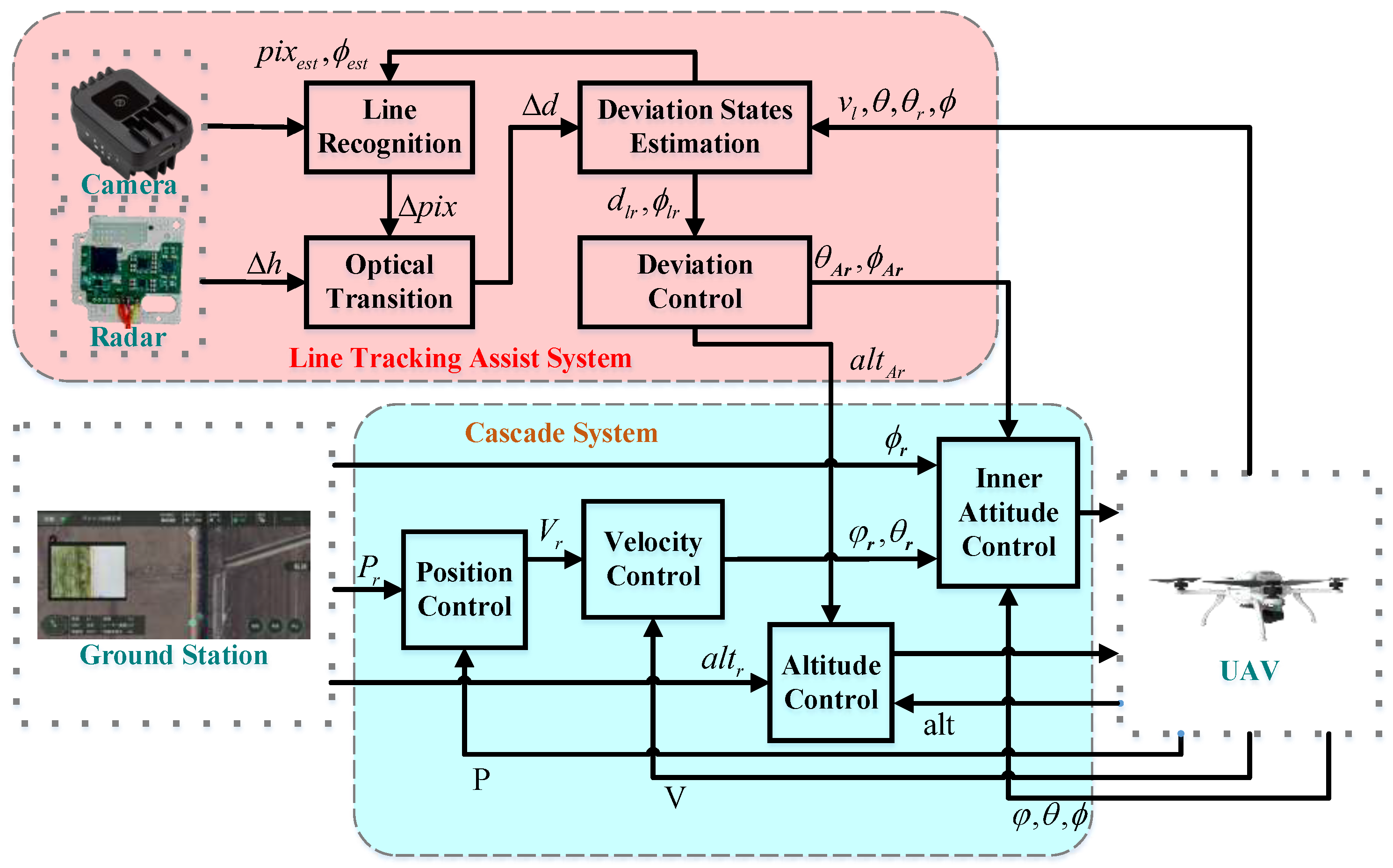
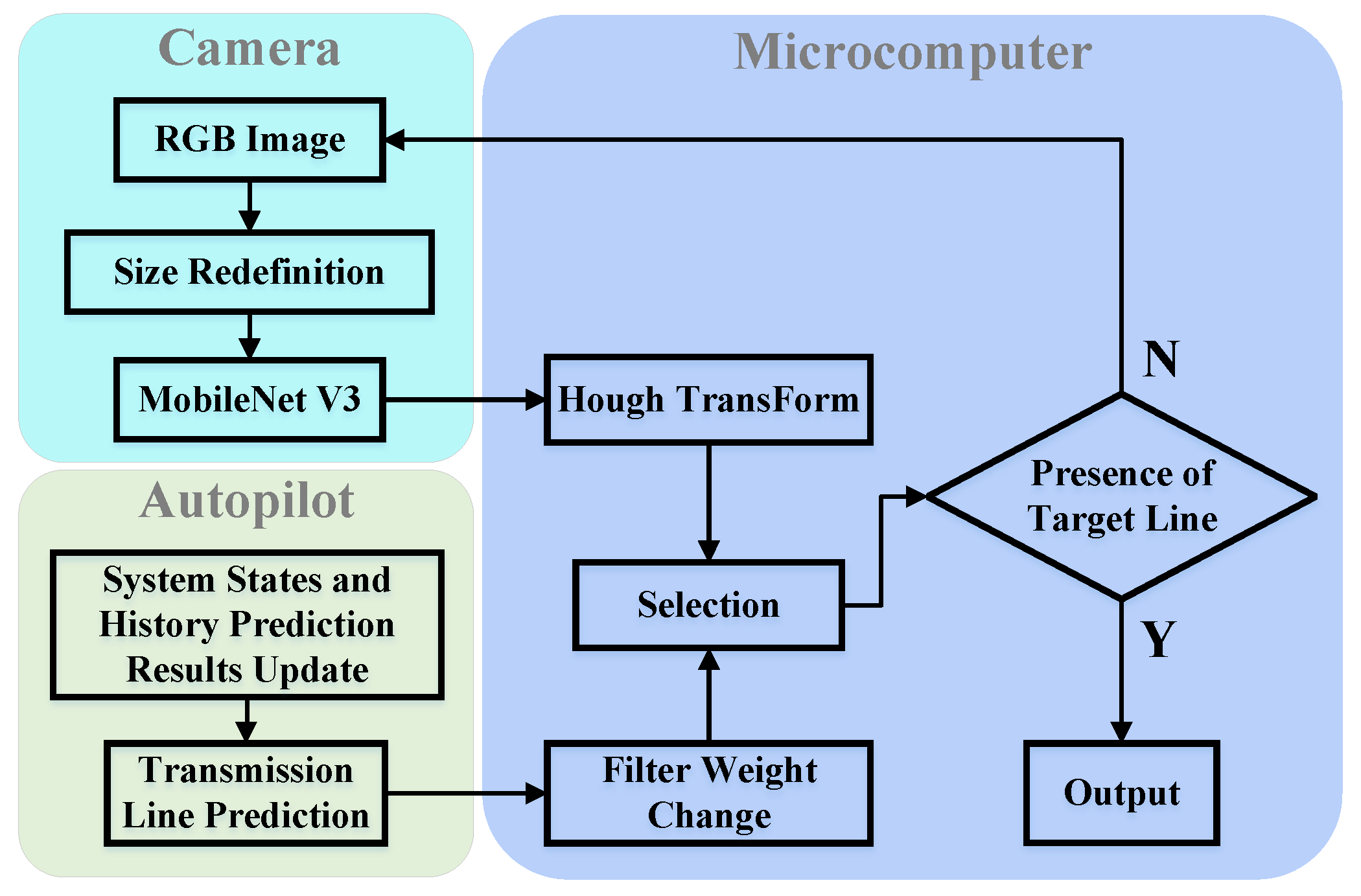
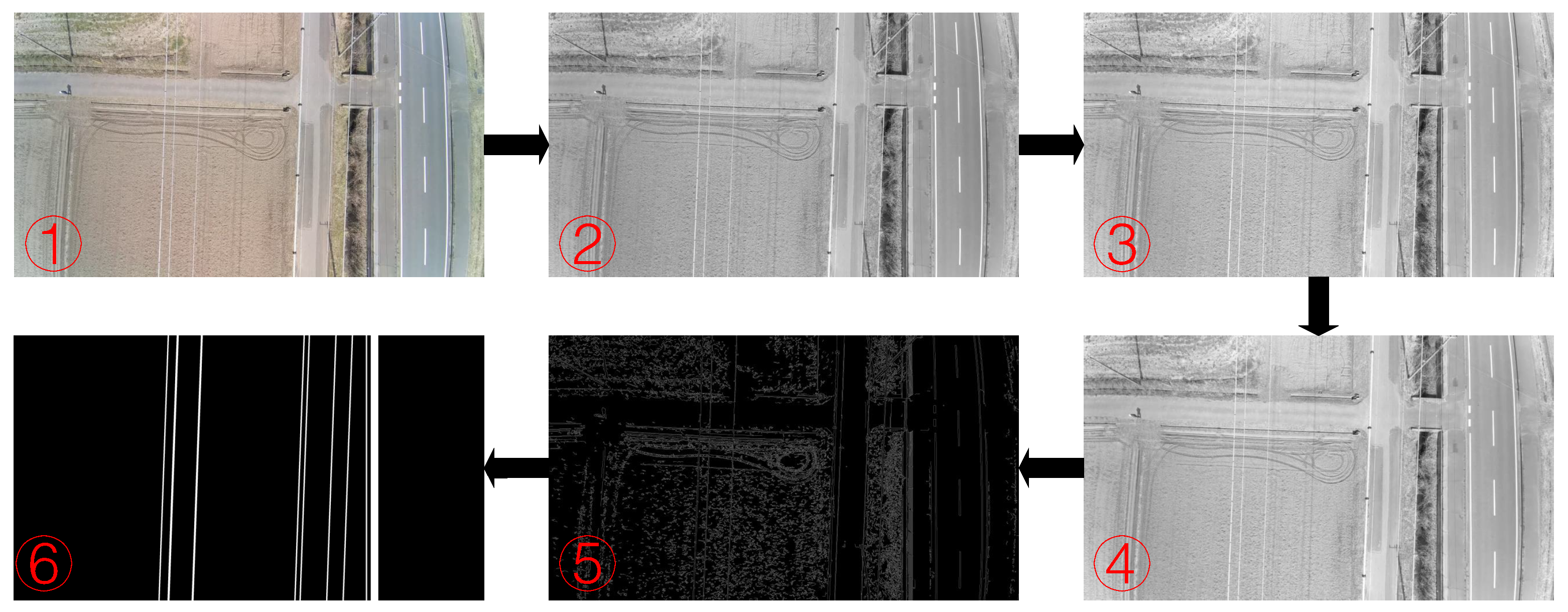




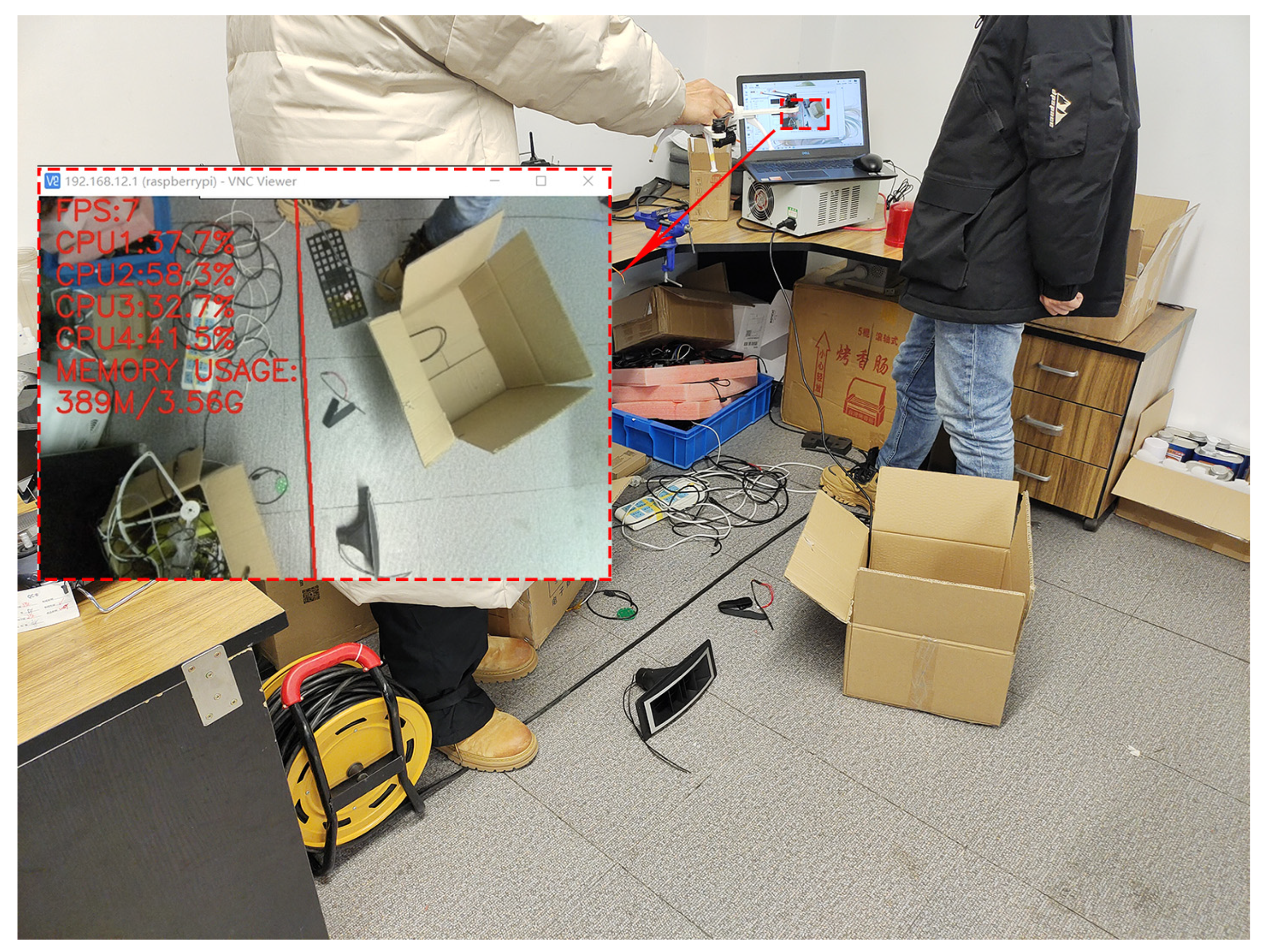

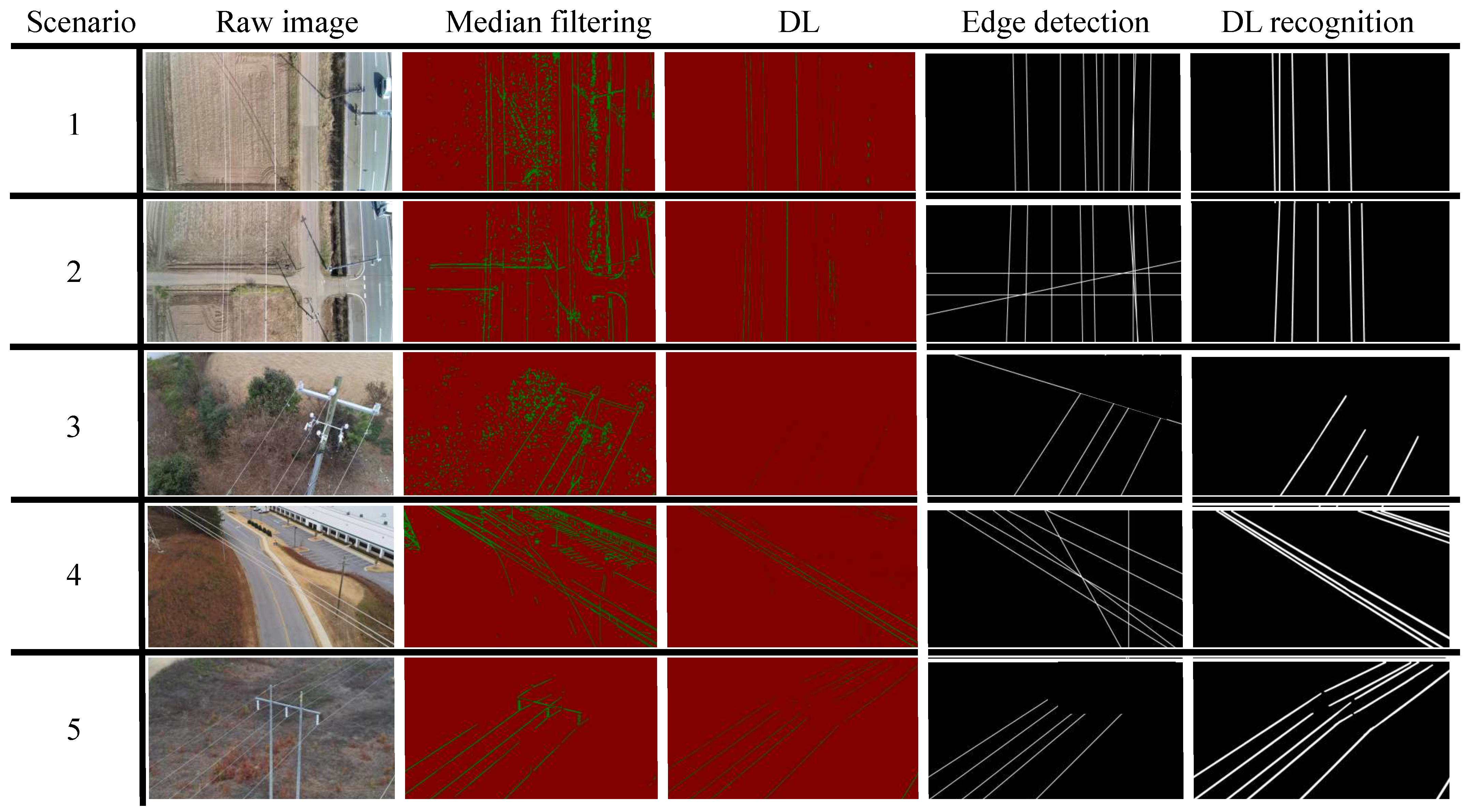
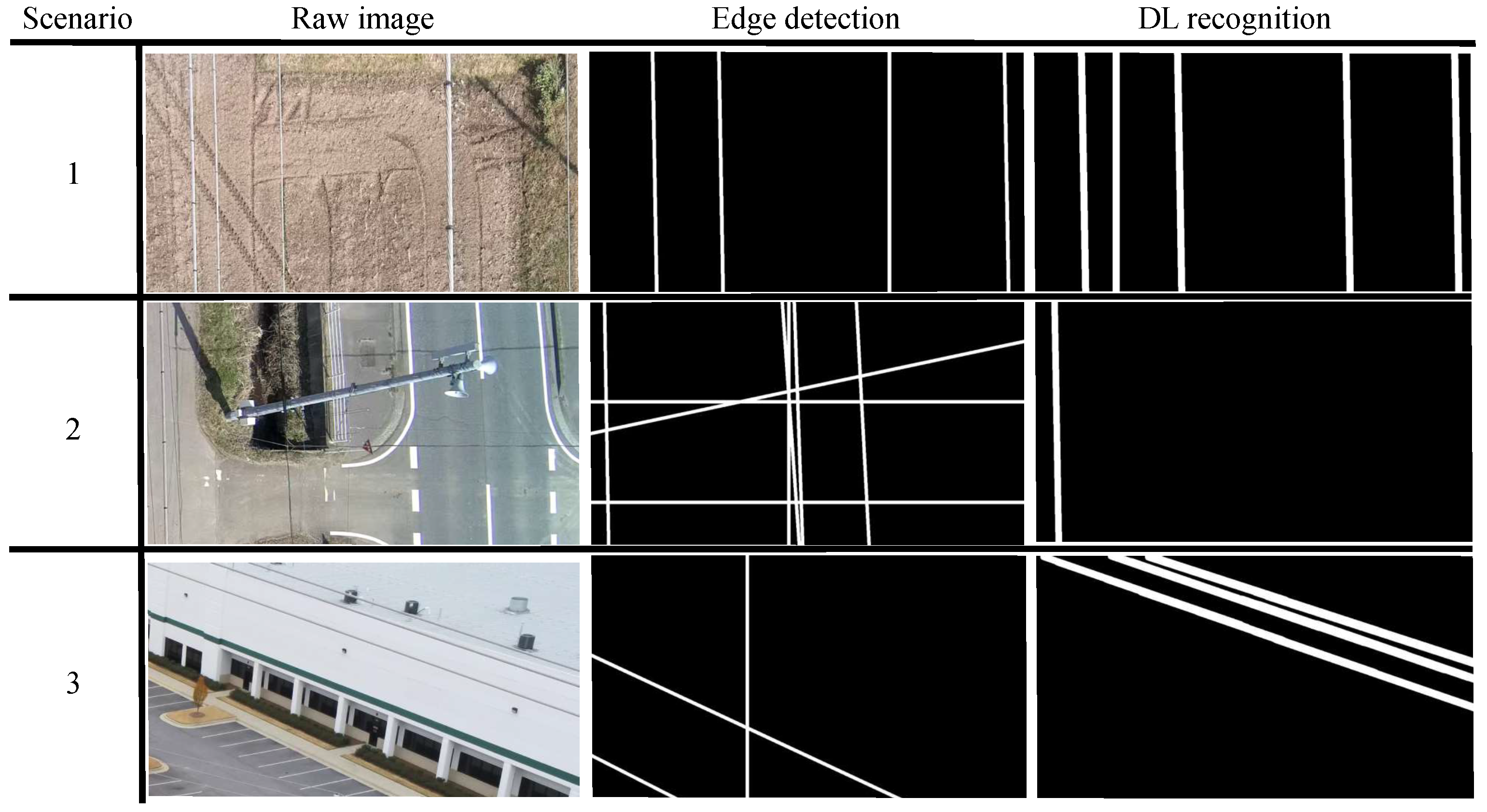
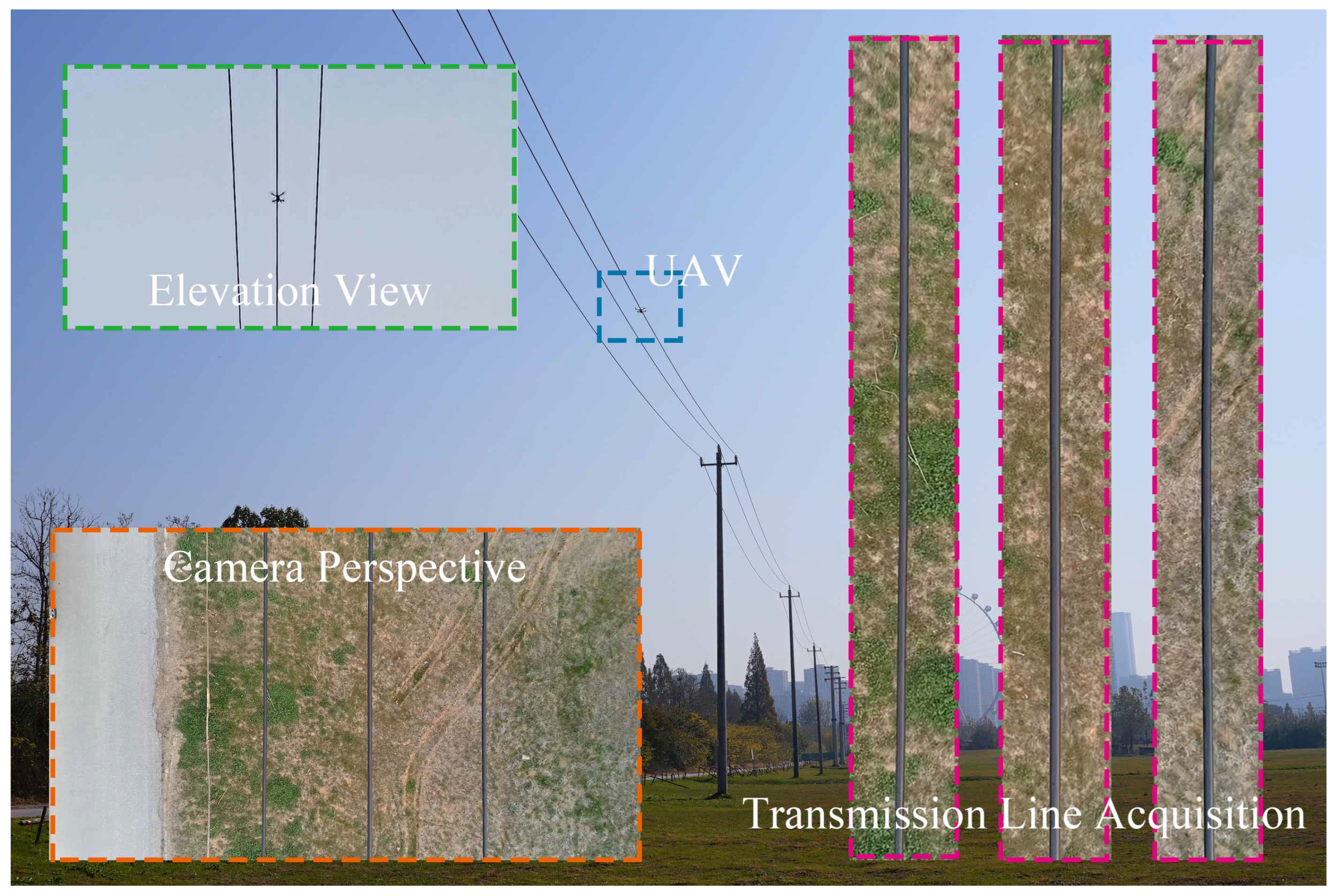
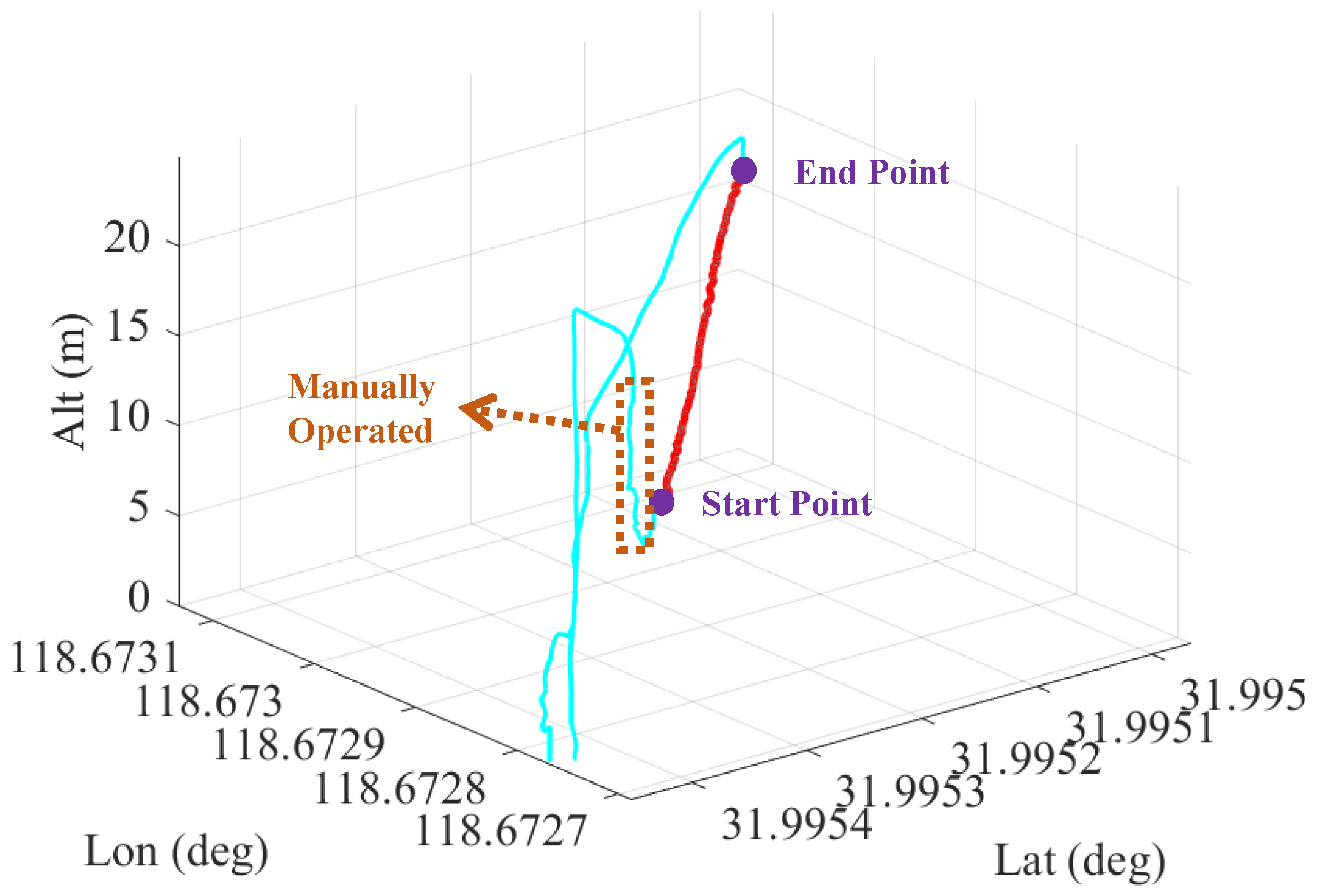

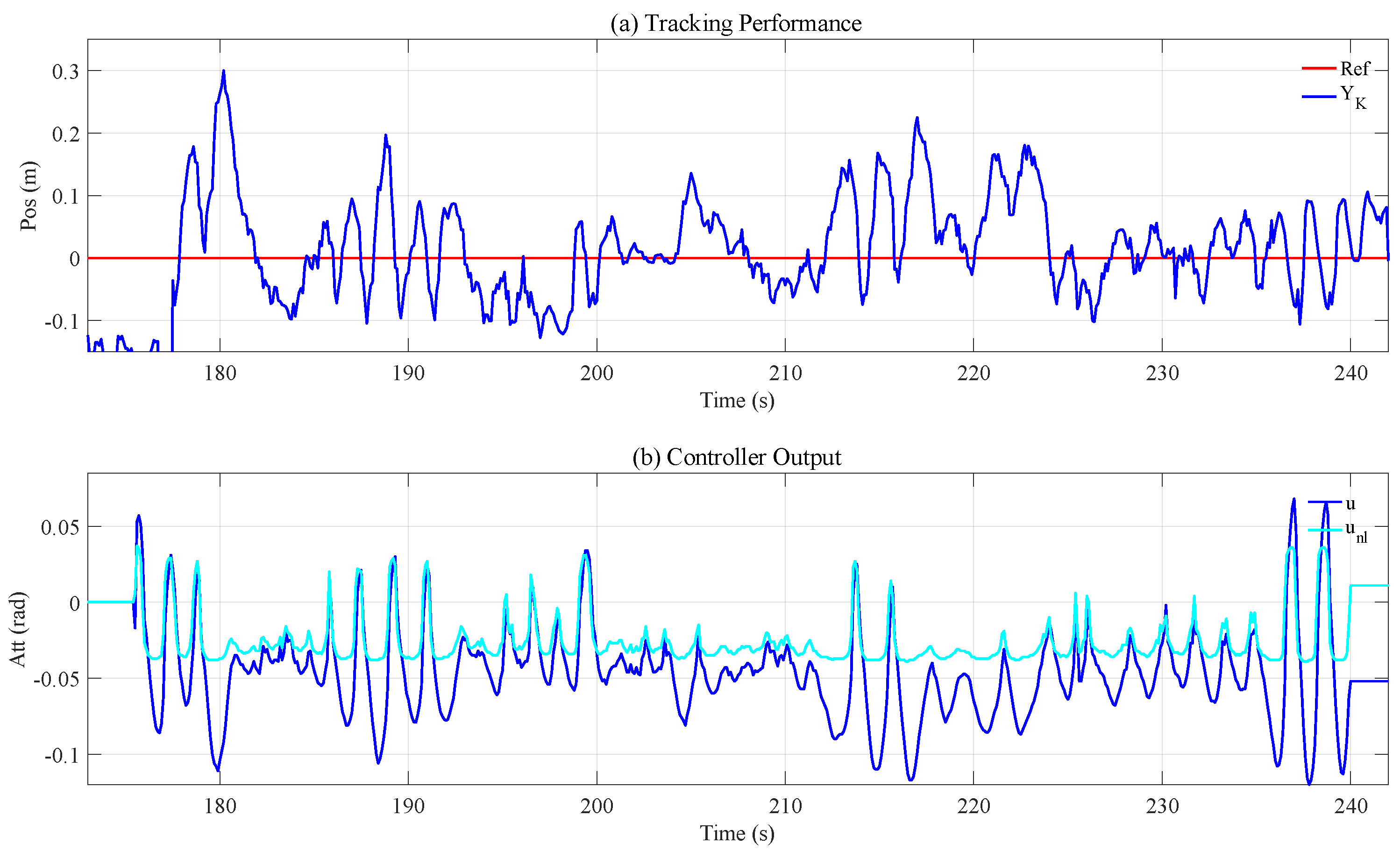
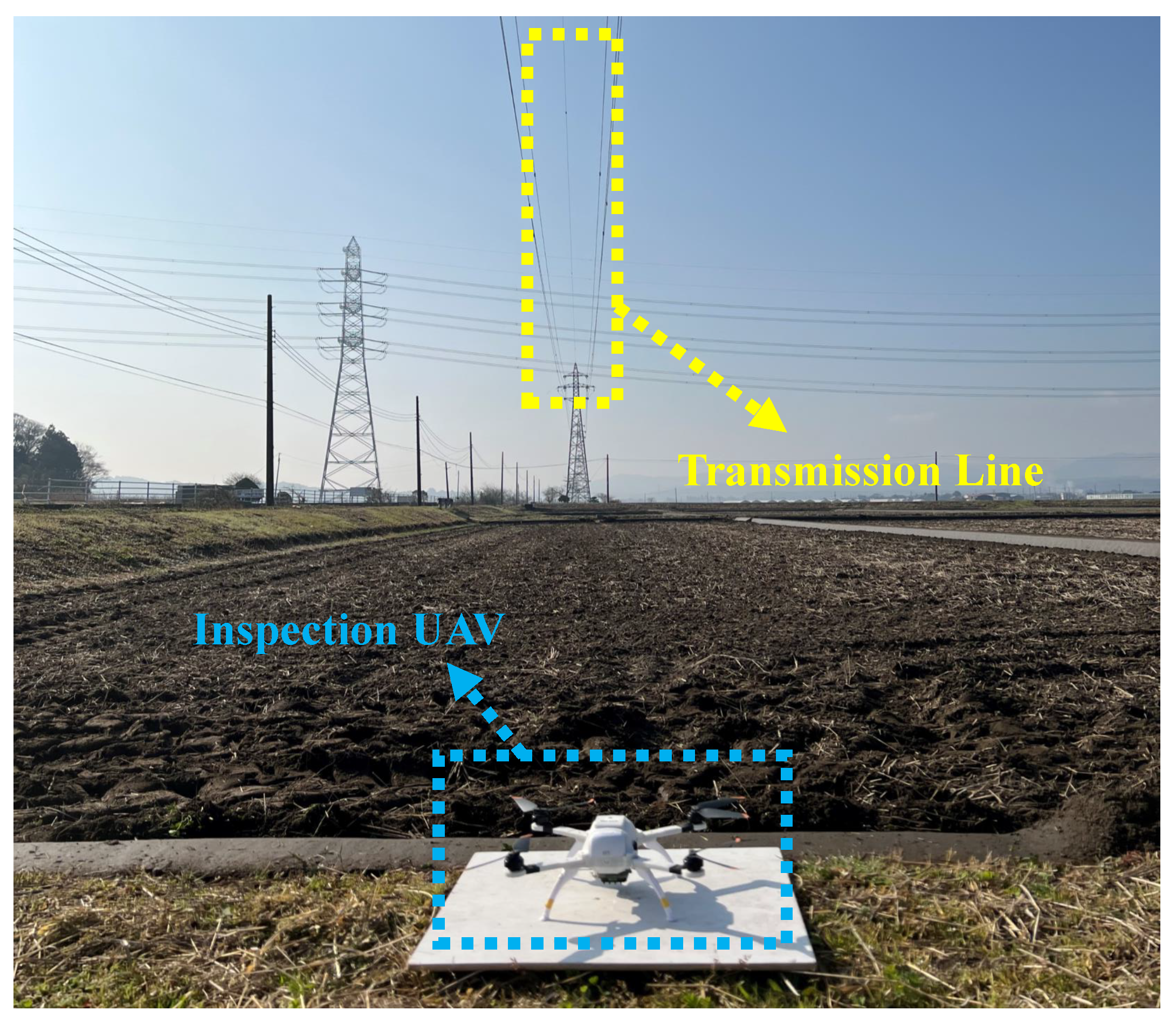
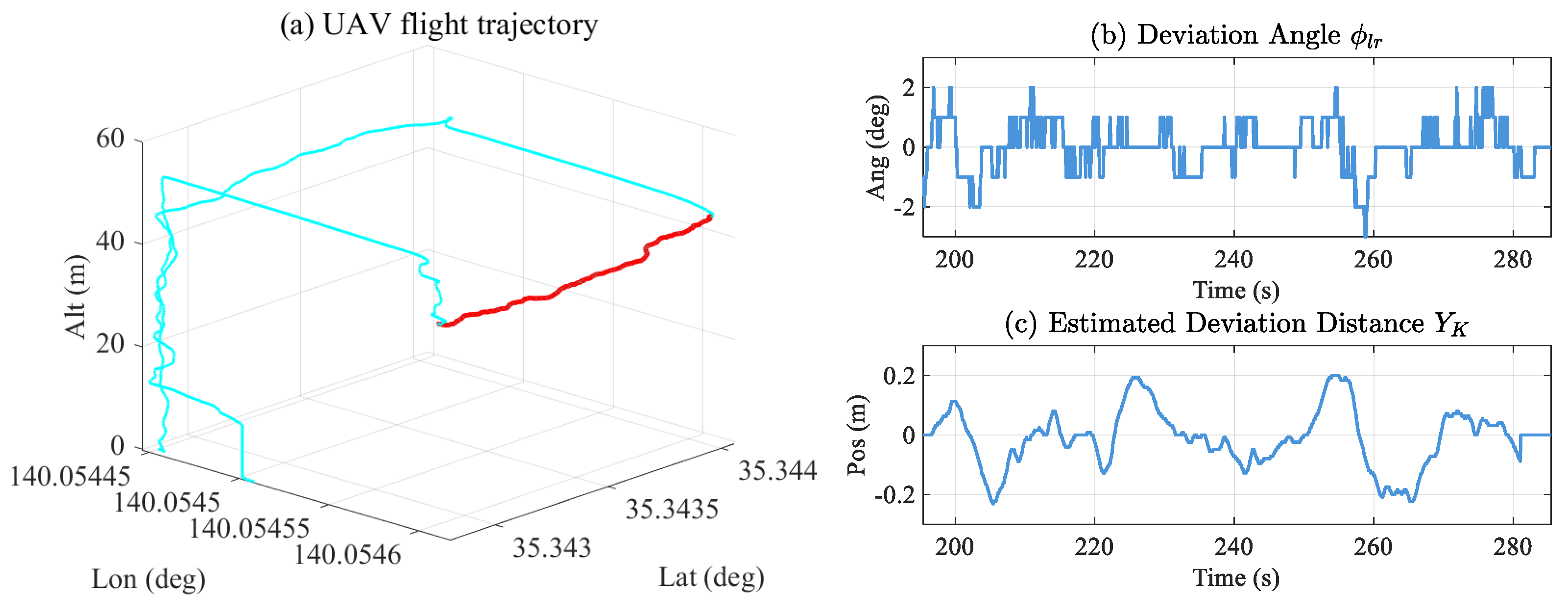

| Device | Model | Description |
|---|---|---|
| GNSS | M8N series [33] | The GNSS receiver is positioned atop the platform to maximize satellite signal reception and to mitigate the internal sensors’ geomagnetic interference. |
| Main Control Board | STM32F4 [34], IAR environment [35] | The main control board is positioned at the central location of the airframe. |
| Camera | OAK-1 MAX [36] | The RGB camera is mounted on the bottom of the drone. |
| Radar | PLK-LC2001l [37] | The mm-wave radar is mounted on the bottom of the drone near the camera. |
| Raspberry Pi | Compute Module 4 [38] | The Raspberry Pi core board is integrated beneath the main control board. |
| Input | Operator | Exp | #out | SE | NL | s |
|---|---|---|---|---|---|---|
| conv2d | – | 16 | – | HS | 2 | |
| bneck, 3× | 16 | 16 | – | RE | 1 | |
| bneck, 3× | 64 | 24 | – | RE | 2 | |
| bneck, 3× | 72 | 24 | – | RE | 1 | |
| bneck, 5× | 72 | 40 | ✓ 1 | RE | 2 | |
| bneck, 5× | 120 | 40 | ✓ | RE | 1 | |
| bneck, 5× | 120 | 40 | ✓ | RE | 1 | |
| bneck, 3× | 240 | 80 | – | HS | 2 | |
| bneck, 3× | 200 | 80 | – | HS | 1 | |
| bneck, 3× | 184 | 80 | – | HS | 1 | |
| bneck, 3 × 3 | 184 | 80 | – | HS | 1 | |
| bneck, 3 × 3 | 480 | 112 | ✓ | HS | 1 | |
| bneck, 3 × 3 | 672 | 112 | ✓ | HS | 2 | |
| bneck, 5 × 5 | 672 | 160 | ✓ | HS | 1 | |
| bneck, 5 × 5 | 960 | 160 | ✓ | HS | 1 | |
| bneck, 5 × 5 | 960 | 160 | ✓ | HS | 1 | |
| conv2d, 1 × 1 | – | 960 | – | HS | 1 | |
| pool, 7 × 7 | – | – | – | – | 1 | |
| conv2d, 1 × 1 | – | 1280 | – | HS | 1 | |
| conv2d, 1 × 1 | – | k | – | – | 1 |
| Components | Parameter |
|---|---|
| Lateral dynamics (5) | = 2.48, = 3.901, = 31.96 |
| Estimator (8) | |
| Integral SMC (16) |
| Serial Number | Time (Second) | (Degree) | (Meter) |
|---|---|---|---|
| 1 | 254.2 | 1 | 0.2 |
| 2 | 255.2 | 0 | 0.19 |
| 3 | 256.9 | −1 | 0.14 |
| 4 | 257.9 | −2 | 0.0 |
| 5 | 258.9 | −3 | −0.08 |
| 6 | 259.1 | −2 | −0.104 |
| 7 | 259.8 | −1 | −0.128 |
| 8 | 260.4 | 0 | −0.16 |
| 9 | 261.4 | 0 | −0.2 |
Disclaimer/Publisher’s Note: The statements, opinions and data contained in all publications are solely those of the individual author(s) and contributor(s) and not of MDPI and/or the editor(s). MDPI and/or the editor(s) disclaim responsibility for any injury to people or property resulting from any ideas, methods, instructions or products referred to in the content. |
© 2024 by the authors. Licensee MDPI, Basel, Switzerland. This article is an open access article distributed under the terms and conditions of the Creative Commons Attribution (CC BY) license (https://creativecommons.org/licenses/by/4.0/).
Share and Cite
Wang, W.; Shen, Z.; Zhou, Z. A Novel Vision- and Radar-Based Line Tracking Assistance System for Drone Transmission Line Inspection. Remote Sens. 2024, 16, 355. https://doi.org/10.3390/rs16020355
Wang W, Shen Z, Zhou Z. A Novel Vision- and Radar-Based Line Tracking Assistance System for Drone Transmission Line Inspection. Remote Sensing. 2024; 16(2):355. https://doi.org/10.3390/rs16020355
Chicago/Turabian StyleWang, Wei, Zhening Shen, and Zhengran Zhou. 2024. "A Novel Vision- and Radar-Based Line Tracking Assistance System for Drone Transmission Line Inspection" Remote Sensing 16, no. 2: 355. https://doi.org/10.3390/rs16020355
APA StyleWang, W., Shen, Z., & Zhou, Z. (2024). A Novel Vision- and Radar-Based Line Tracking Assistance System for Drone Transmission Line Inspection. Remote Sensing, 16(2), 355. https://doi.org/10.3390/rs16020355







